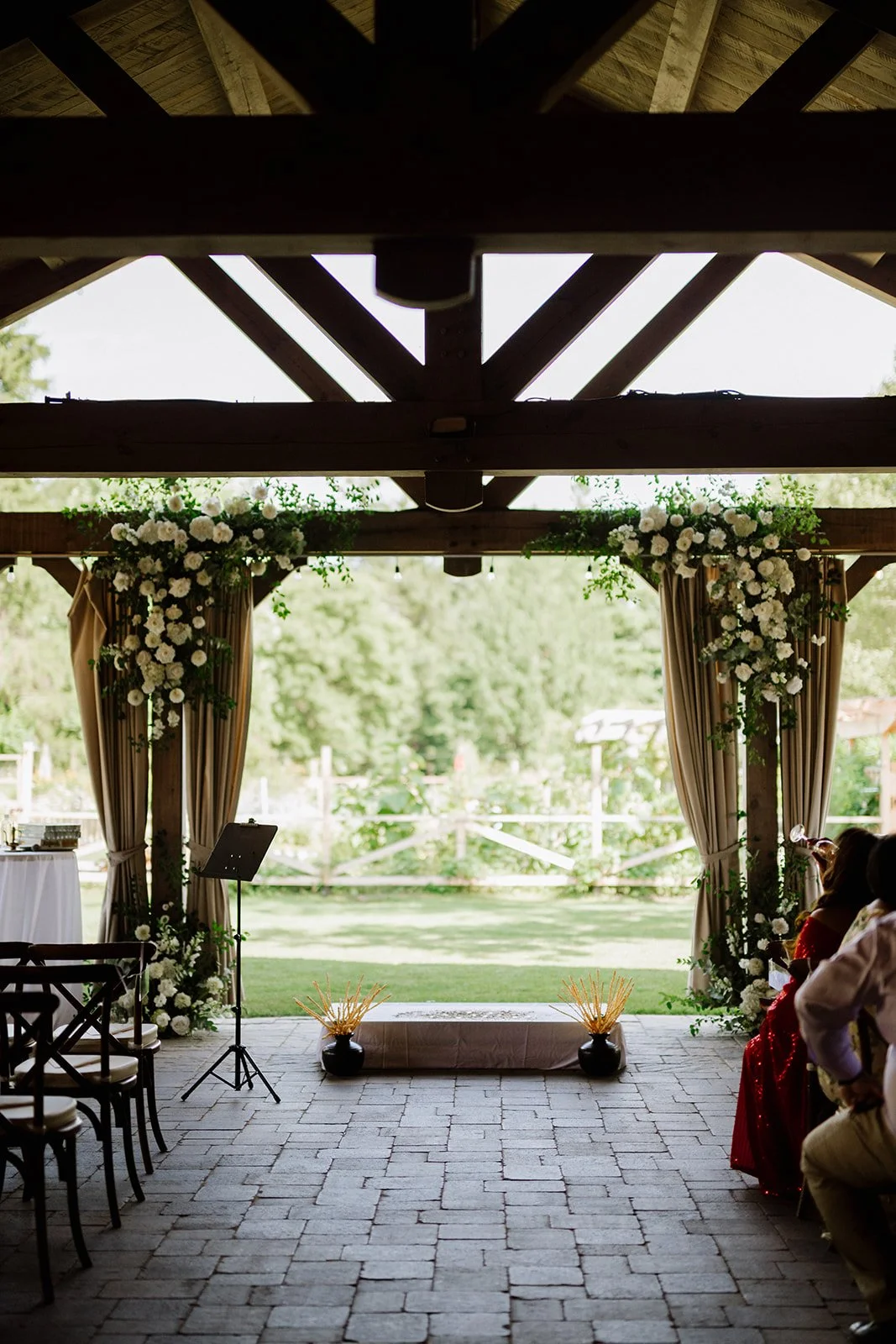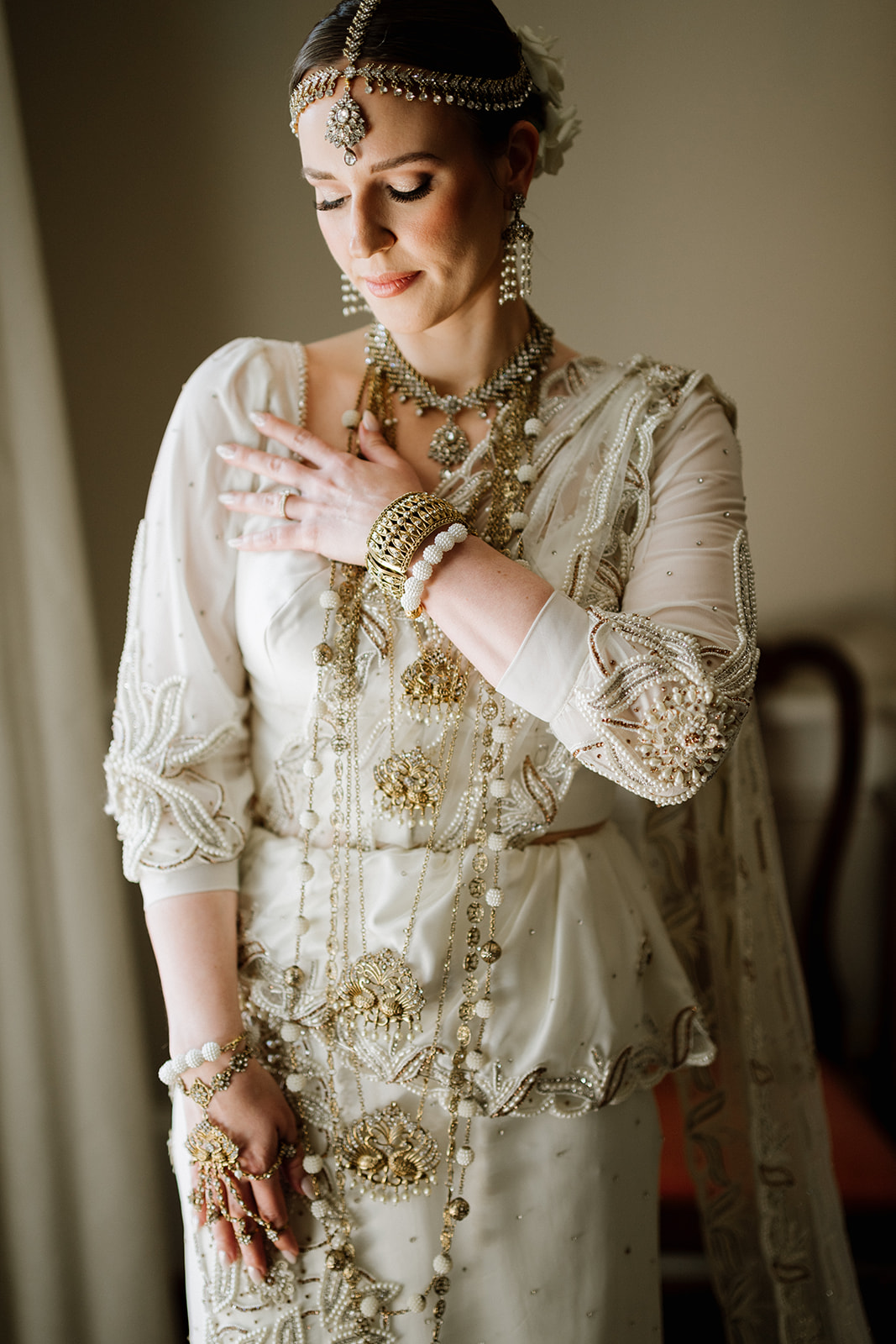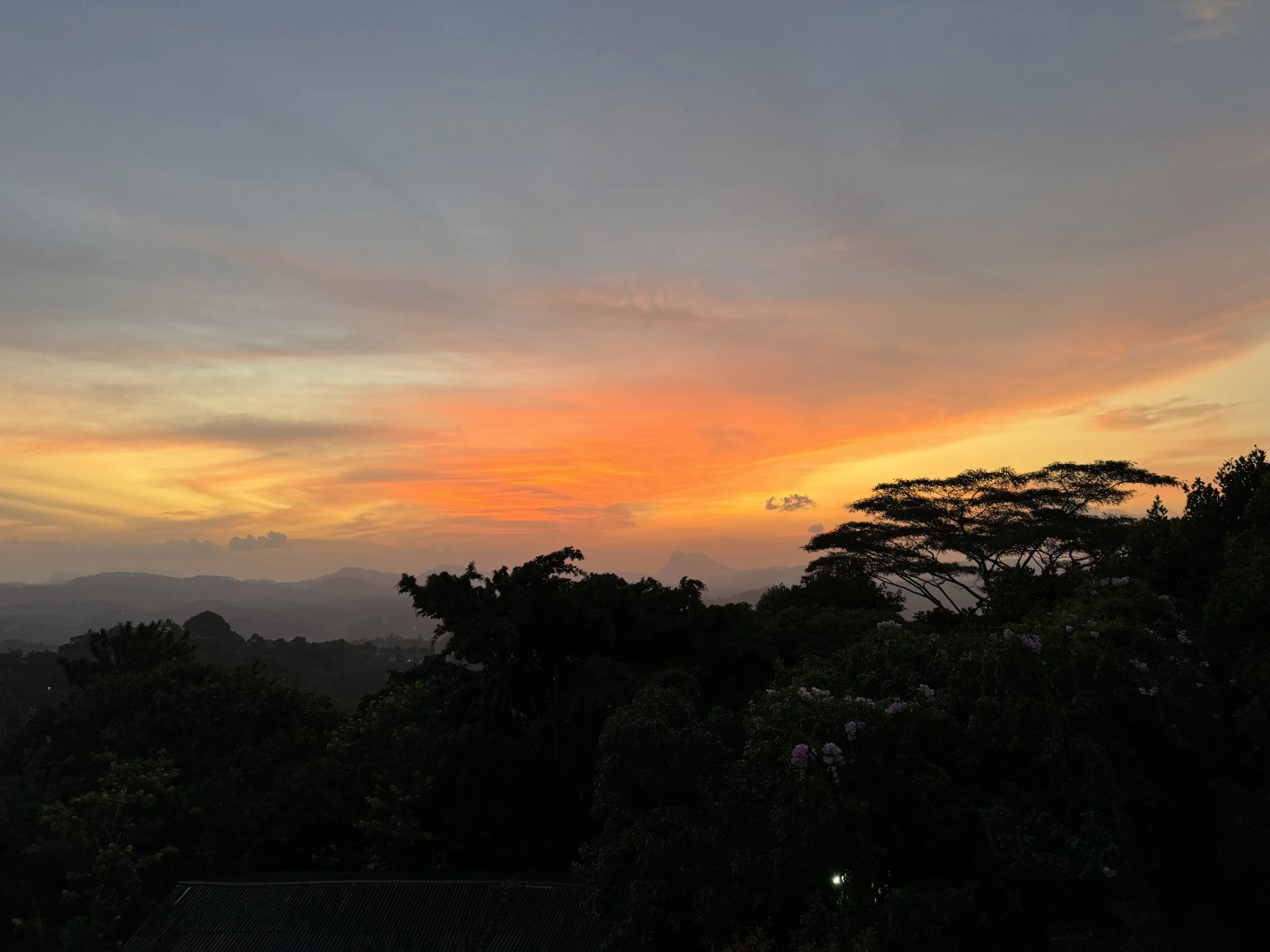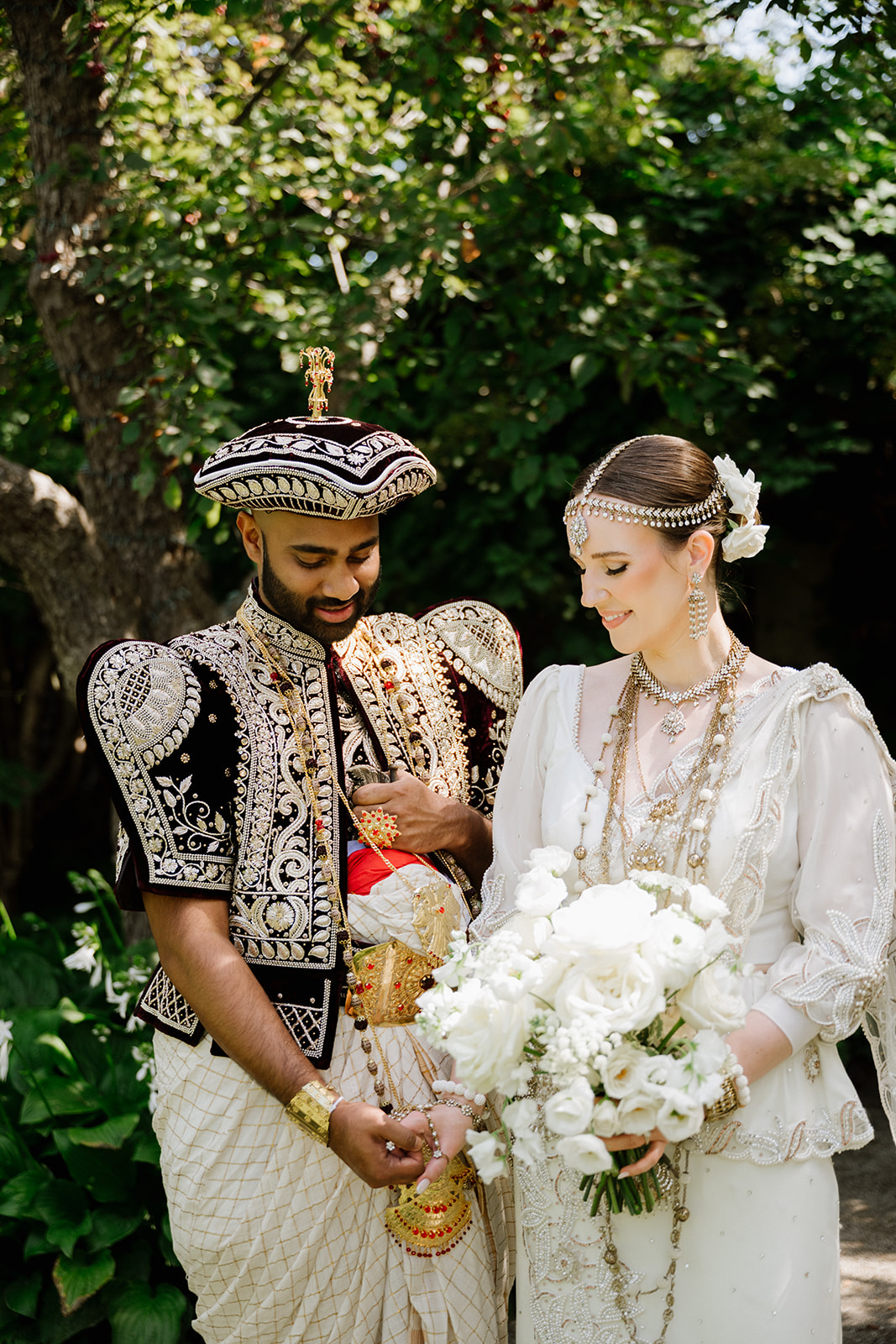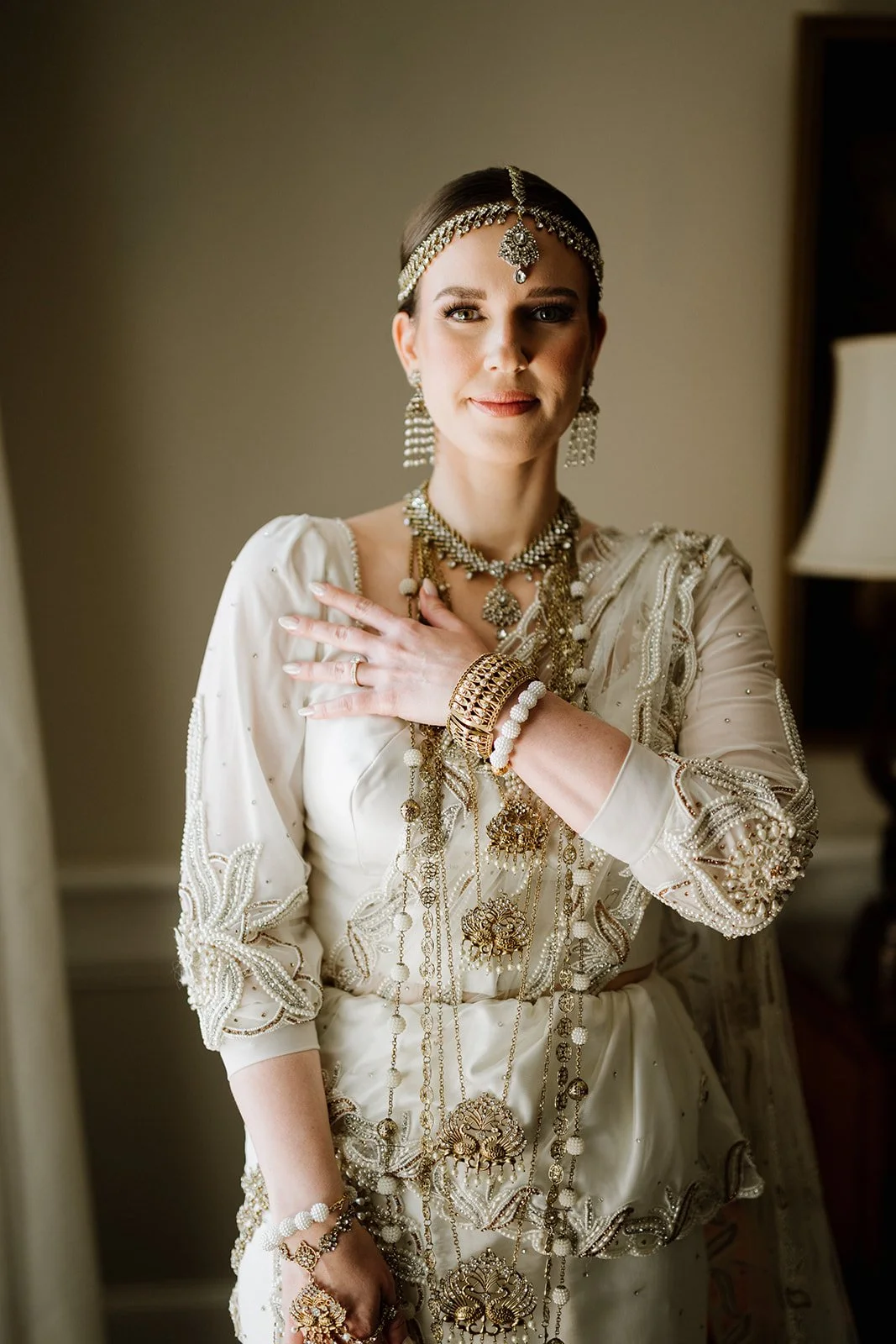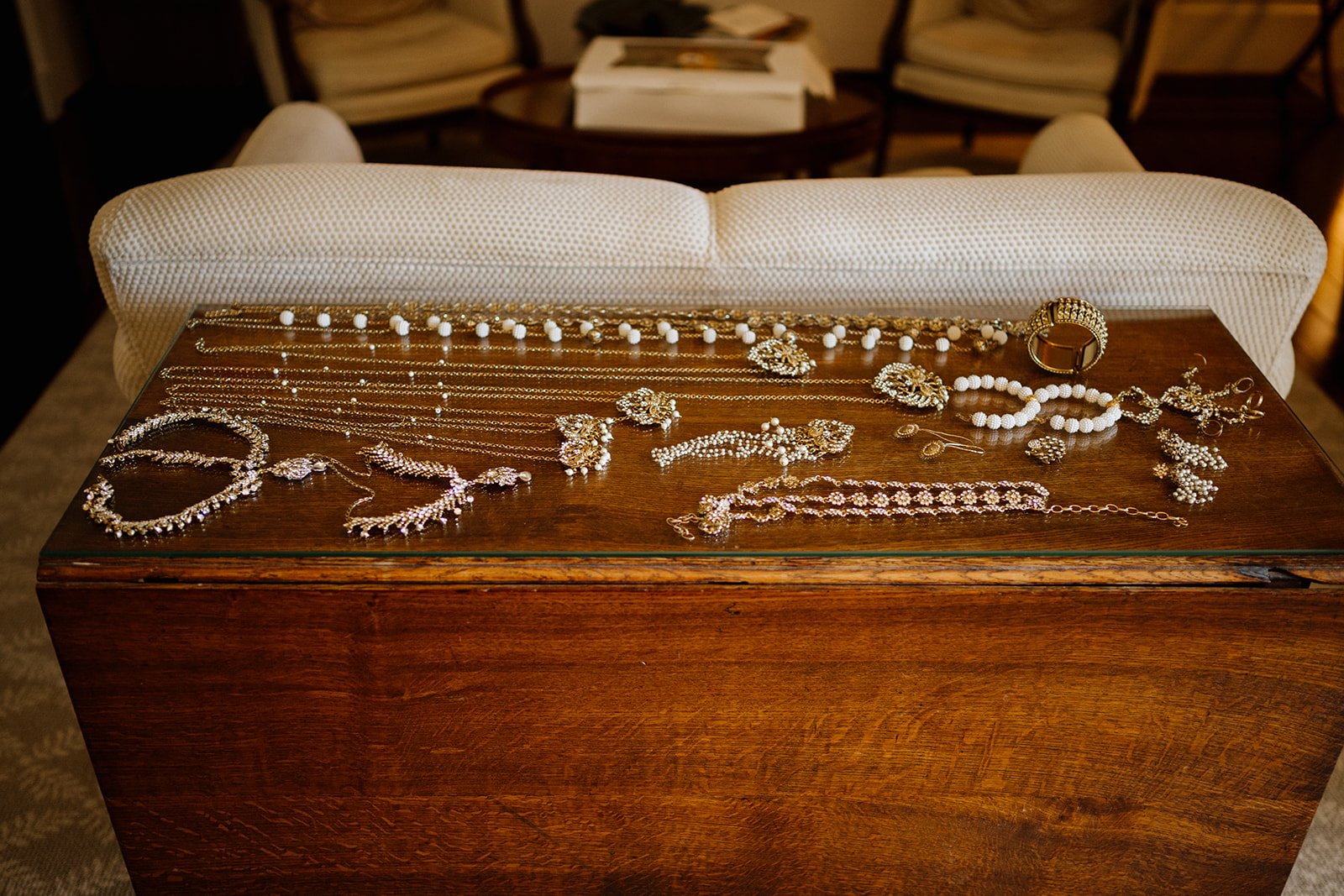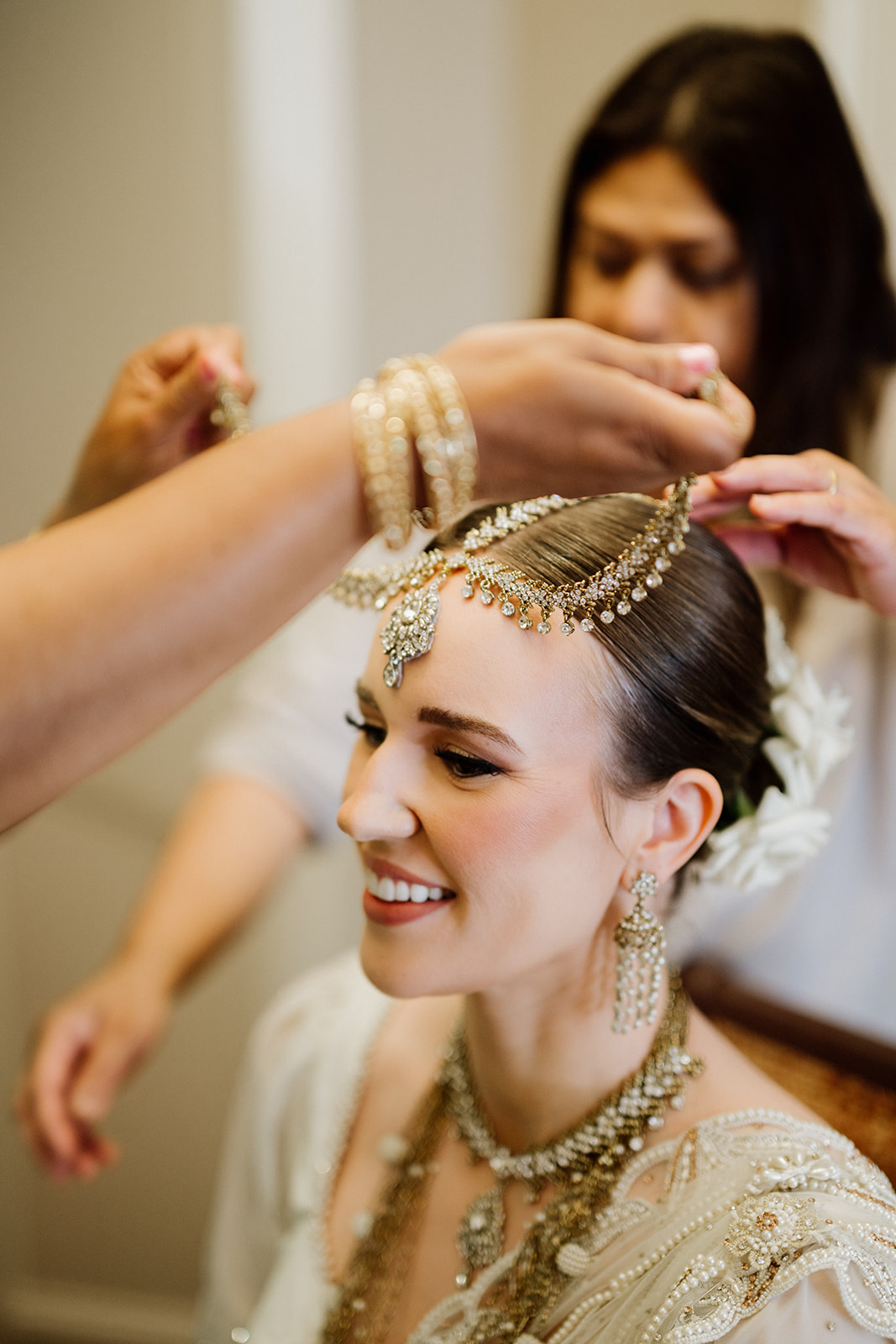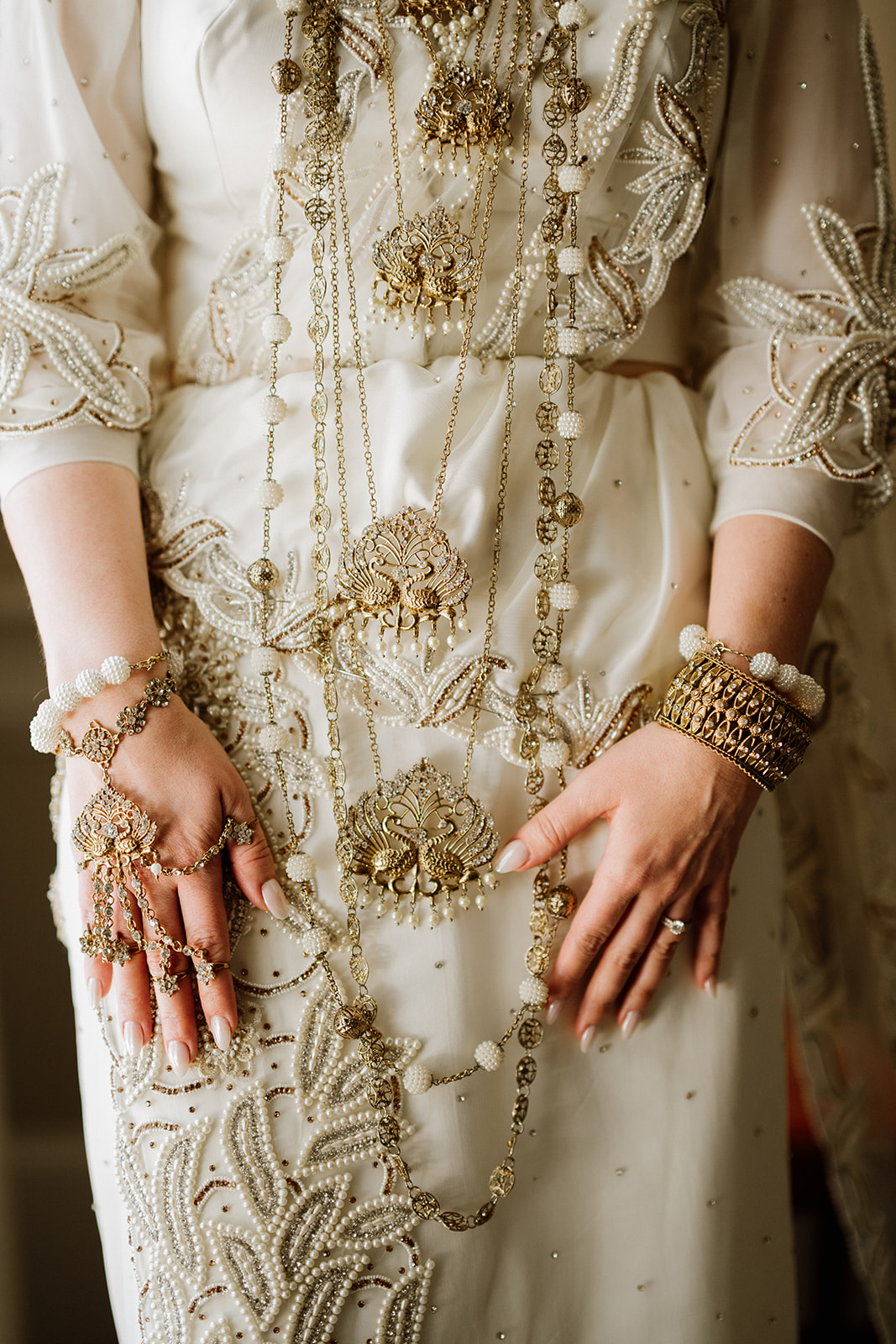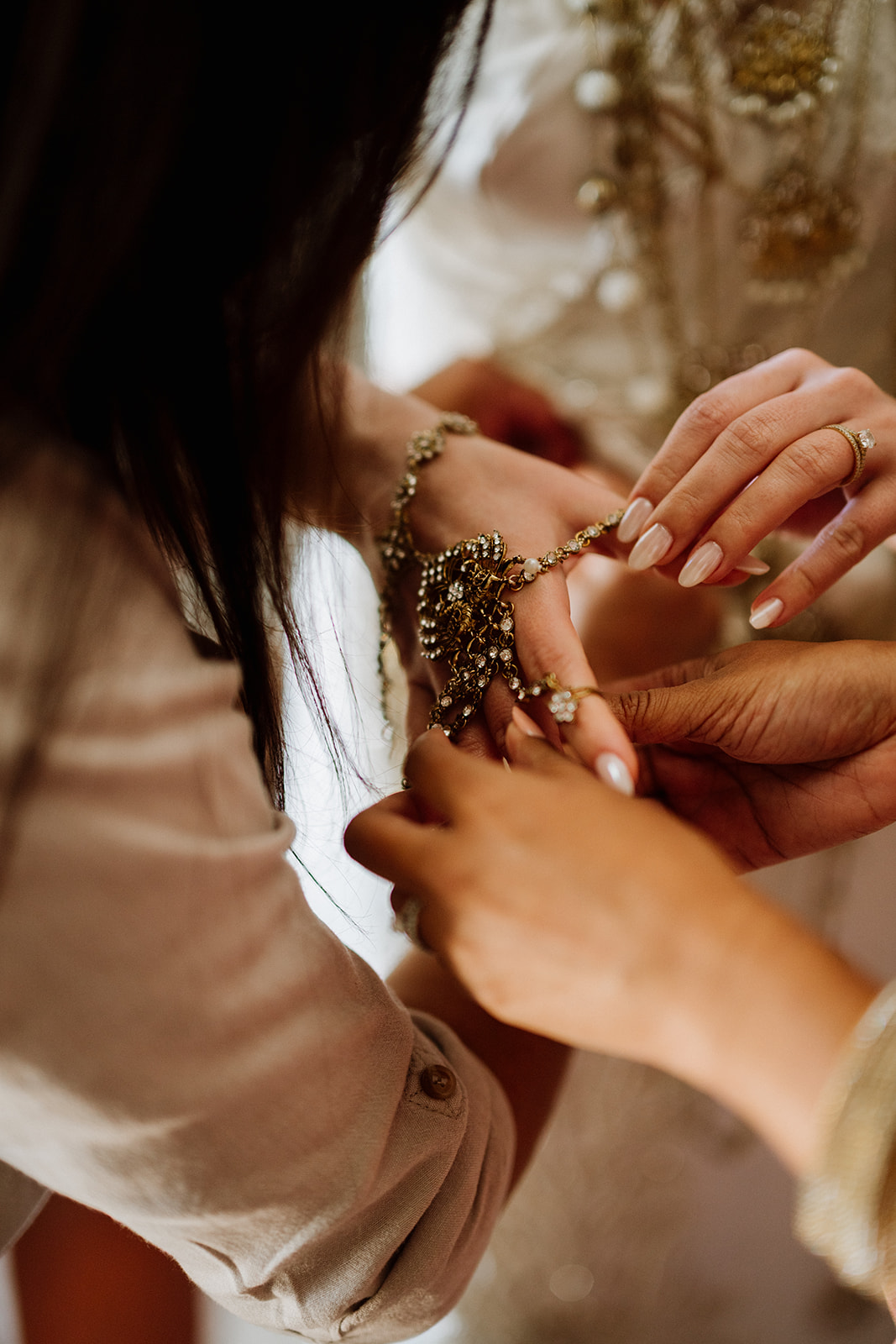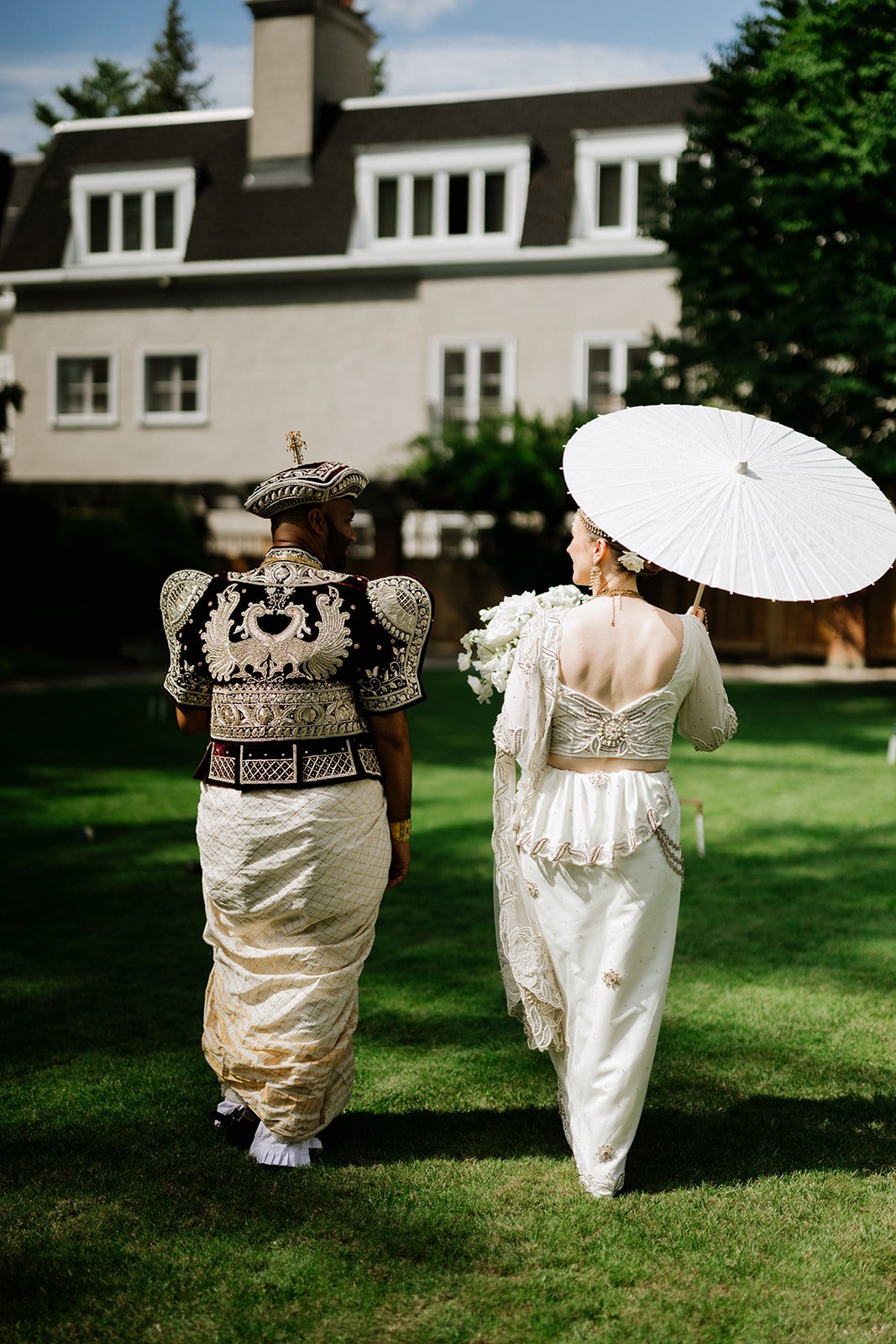My Custom Bridal Saree - Inside the Tradition of Kandyian Bridal Sarees
Image Credit: Lindsay Coulter Photography
It’s been just over two months since I got married in two beautiful, intimate ceremonies with friends and family.
An integral part of our day was highlighting my husband’s Sri Lankan culture — beginning our day with a traditional Buddhist wedding ceremony, called a Poruwa ceremony.
As we embark on our married life together, the ceremony honours our parents, our ancestors and the communities that raised us.
Image Credit: Lindsay Coulter Photography, our poruwa platform, symbolizing the home we’ll build together.
A key part was our traditional dress.
For me, I wore a Kandyian bridal saree — a custom garment my husband’s aunt (herself a bridal saree seamstress!) made especially for me.
And a garment steeped in deep tradition.
Image Credit: Lindsay Coulter Photography
We first picked this up last year during a trip to Sri Lanka. And we truly lucked out when the very first saree shop we entered had two custom bridal sarees remaining (that first bride had walked away with the third – leaving my sister-in-law and I to nab the other two!).
What is a Kandyian Bridal Saree?
With origins from 534 BC, the Kandyian bridal saree hails from the city of Kandy — the last kingdom of the ancient kings of Sri Lanka, before the British colonized the area in 1815.
Image Credit: The Style Historian. Vacationing in Kandy, 2024 – Kandy is known for its roaming hills. It is truly breathtaking. Here’s the sunset from our hotel that was high on the hills.
It’s believed its inspiration lies from the last royal court of Sri Lanka, and is today widely accepted as the national dress for Sinhalese women.
It is extra fitting that my husband’s wedding outfit (nilame) translates to “The King’s Outfit”.
Image Credit: Lindsay Coulter Photography.
What makes the Kandyian bridal saree unique?
There are three key hallmarks, making the saree distinct:
⁃ The neatly pleated peplum frill at the midriff;
⁃ The longer, puffy sleeves with ornate embellishments on the blouse; and
⁃ The 26-piece gold jewellery set.
For our wedding, it took our dresser 1.5 hours to dress me — as each individual piece of the 26-piece jewellery is pinned to the bride.
Image Credit: Lindsay Coulter
Image Credit: Lindsay Coulter Photography
And it truly represents the village of women who helped bring this entire look together.
From our saree dresser Chammi, the glam team, my mother and mother-in-law, to Lindsay our photographer who captured the process – there were many hands responsible for this gorgeous garment.
Image Credit: Lindsay Coulter Photography
And the jewellery holds important symbolic significance.
The bride is dressed in 26-handmade pieces of jewellery from head to waist. Generally, these are gold plated and passed down from mothers to their daughters.
Image Credit: Lindsay Coulter Photography
Image Credit: Lindsay Coulter Photography
We sourced my jewellery set on a family trip to Sri Lanka following our engagement. We found it in the tiniest little shop down an alleyway. In theory, the shop was only meant to fit around 6 people but we all jammed in. It was a sight to see, and such a fond part of our wedding planning journey.
A memory I’ll always treasure.
Image Credit: Lindsay Coulter Photography.
The symbolism behind Kandyian Bridal Jewellery
While many online maintain that the entire set is meant to represent purity and luck, there are two key aspects to the jewellery.
The first is the headpiece (nalalpati) - which is placed on the head by the mother at an auspicious (good fortune/lucky) time.
Image Credit: Lindsay Coulter photography
With three long chains attached to a middle penchant sitting on the middle of the head, the bride’s mother places it on the bride’s head to give blessings.
It is considered one of the most important pieces in Kandyian jewellery because it was once worn by kings and royalty on special occasions.
On your wedding day, it serves as a symbol to distinguish the bride - and it is considered bad luck to wear this before your wedding day.
The second is the set of necklaces. The bride wears seven necklaces, honouring the seven generations before her and are also meant to act as a symbol of blessings. These usually include interlocking swans (like mine did) but designs can vary.
Image Credit: Lindsay Coulter Photography
Additionally, the bride also wears two bracelets, alongside the aha mudu wall - a hand ornament. It has a central pendant with 5 chains attaching to the fingers. Plus, a chain is wrapped around the hip, and long, dangling earrings called Dimitri are worn
Image Credit: Lindsay Coulter Photography
As you can imagine, it takes so much time to be dressed because of all the beautiful layers!
After the ceremony, which took about 30 minutes overall, we changed into our next look for our second ceremony, while our guests enjoyed an extended cocktail hour to roam the gardens.
And for the next look, I went with something completely different.
In part two, I’ll unpack the inspo and history behind my second look. Is there anything else you’d like to know about my bridal saree? Let me know below!
Sources: Times of India, Wikipedia, Brides Sri Lanka, Trekking in Couture, and of course, family, my bridal saree dresser and our poruwa ceremony officiant.

